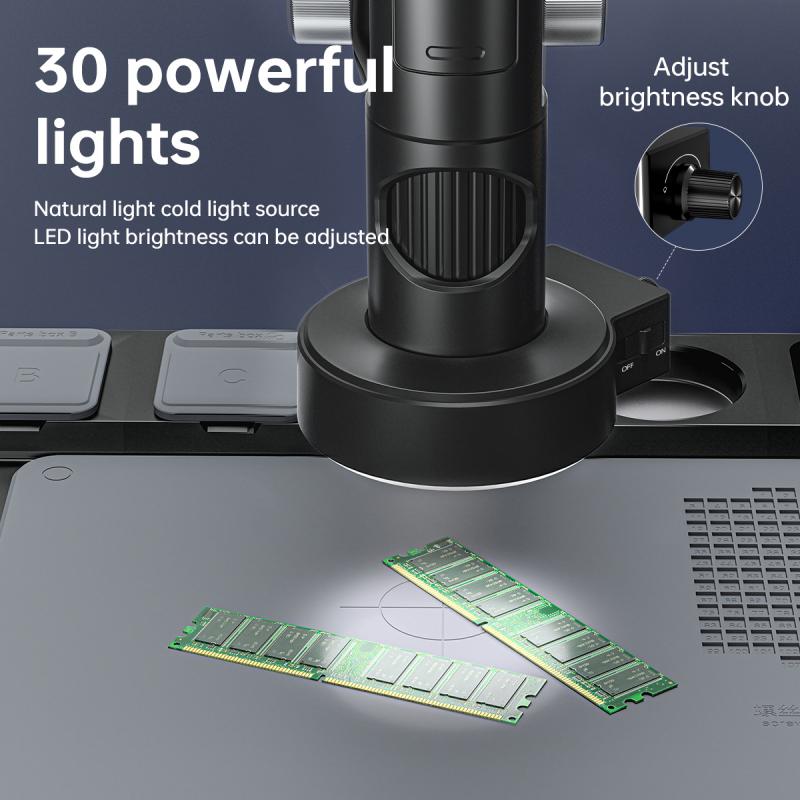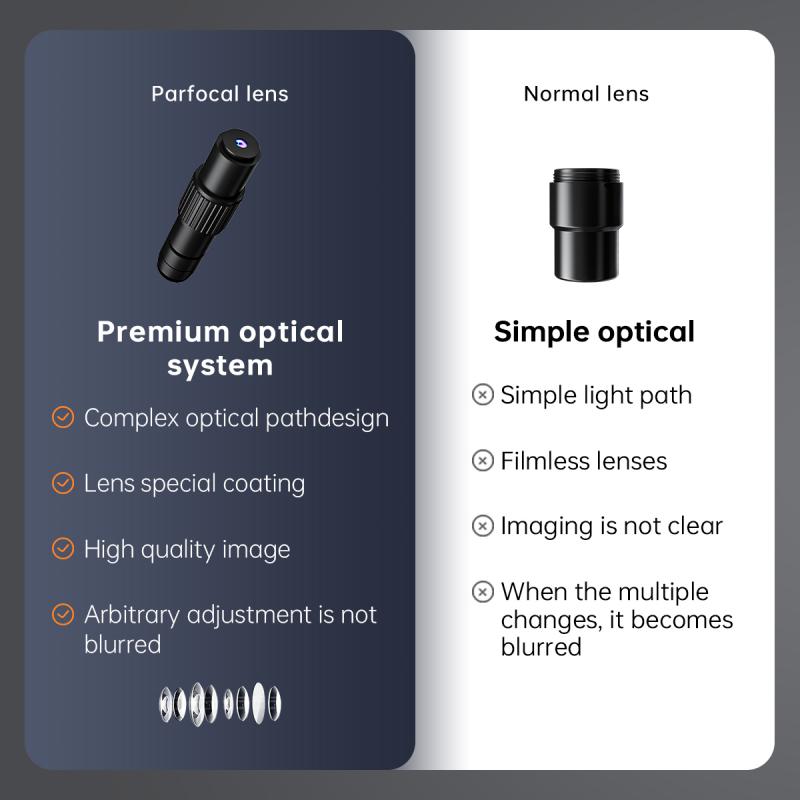What Does An Electron Microscope Do ?
An electron microscope is a type of microscope that uses a beam of electrons to create an image of a sample. It is capable of much higher magnification and resolution than a traditional light microscope, allowing scientists to see very small structures in great detail. The electron beam is focused using magnetic lenses and directed onto the sample, which is typically very thin and coated with a metal to enhance contrast. As the electrons interact with the sample, they scatter and produce signals that are detected and used to create an image. Electron microscopes are used in a wide range of scientific fields, including materials science, biology, and nanotechnology. They have been instrumental in advancing our understanding of the structure and function of cells, viruses, and other microscopic structures.
1、 Magnification and Resolution
An electron microscope is a powerful tool used to observe and study the structure of materials at a very high magnification and resolution. The primary function of an electron microscope is to magnify the image of a sample by using a beam of electrons instead of light. This allows for much higher magnification and resolution than is possible with a traditional light microscope.
Magnification is the process of enlarging an image, and electron microscopes can magnify objects up to 10 million times their actual size. This level of magnification allows scientists to study the smallest details of a sample, such as the structure of individual cells or the arrangement of atoms in a crystal.
Resolution refers to the ability to distinguish between two closely spaced objects. Electron microscopes have a much higher resolution than light microscopes, allowing scientists to see details that would otherwise be impossible to observe. This is because the wavelength of electrons is much smaller than that of light, allowing for greater precision in imaging.
The latest point of view on electron microscopy is that it is an essential tool for many fields of science, including materials science, biology, and nanotechnology. Advances in electron microscopy technology have allowed scientists to study materials at the atomic level, leading to new discoveries and breakthroughs in many areas of research. Additionally, electron microscopy is becoming more accessible to researchers around the world, allowing for greater collaboration and sharing of knowledge.

2、 Transmission Electron Microscopy
Transmission Electron Microscopy (TEM) is a type of electron microscope that uses a beam of electrons to create high-resolution images of thin samples. The electron beam is transmitted through the sample, and the resulting image is formed by the interaction of the electrons with the sample.
TEM is used in a wide range of scientific fields, including materials science, biology, and nanotechnology. It is particularly useful for studying the structure and properties of materials at the nanoscale, where traditional optical microscopes are limited by the diffraction limit.
In recent years, TEM has become an increasingly important tool for studying biological samples, including cells and tissues. Advances in sample preparation techniques and imaging technology have made it possible to study biological samples at unprecedented levels of detail, revealing new insights into the structure and function of cells and tissues.
One of the latest developments in TEM is the use of cryogenic techniques to freeze biological samples in their native state, allowing them to be imaged without the need for staining or other chemical treatments that can alter their structure. This has opened up new avenues for studying the structure and function of biological molecules and complexes, including proteins and viruses.
Overall, TEM is a powerful tool for studying the structure and properties of materials and biological samples at the nanoscale, and its continued development is likely to lead to new discoveries and insights in a wide range of scientific fields.

3、 Scanning Electron Microscopy
Scanning Electron Microscopy (SEM) is a type of electron microscopy that uses a focused beam of electrons to create high-resolution images of the surface of a sample. The electron beam scans the surface of the sample, and the electrons that are scattered or emitted from the sample are detected and used to create an image.
SEM is used in a wide range of scientific and industrial applications, including materials science, biology, and nanotechnology. It is particularly useful for studying the surface morphology and topography of samples, as well as for analyzing the composition and structure of materials.
One of the latest developments in SEM technology is the use of advanced detectors and imaging techniques to enhance the resolution and sensitivity of the images. For example, the use of backscattered electron detectors can provide information about the atomic number and density of the sample, while energy-dispersive X-ray spectroscopy can be used to identify the chemical composition of the sample.
Overall, SEM is a powerful tool for studying the structure and properties of materials at the nanoscale, and it continues to be an important area of research and development in the field of microscopy.

4、 Sample Preparation
An electron microscope is a powerful tool used to observe and analyze the structure of materials at a very high resolution. It uses a beam of electrons instead of light to create an image of the sample being studied. The electron microscope is capable of magnifying objects up to 10 million times, allowing scientists to see the smallest details of a sample.
One of the most important aspects of using an electron microscope is sample preparation. Samples must be carefully prepared to ensure that they are suitable for observation under the microscope. This involves a number of steps, including fixation, dehydration, embedding, and sectioning. Fixation involves preserving the sample in a way that maintains its structure and prevents degradation. Dehydration removes water from the sample, which can interfere with the electron beam. Embedding involves placing the sample in a material that can be sliced into thin sections for observation. Finally, sectioning involves cutting the sample into thin slices that can be placed on a microscope slide.
Recent advances in electron microscopy have led to the development of new techniques for sample preparation. Cryo-electron microscopy, for example, involves freezing the sample in a way that preserves its structure without the need for fixation or embedding. This technique has revolutionized the study of biological molecules and has led to the discovery of new structures and functions. Other techniques, such as focused ion beam milling, allow for the preparation of samples with unprecedented precision and accuracy.
In summary, an electron microscope is a powerful tool for observing and analyzing the structure of materials at a very high resolution. Sample preparation is a critical step in using this technique, and recent advances have led to the development of new techniques that allow for the study of biological molecules and other materials with unprecedented precision and accuracy.






























There are no comments for this blog.